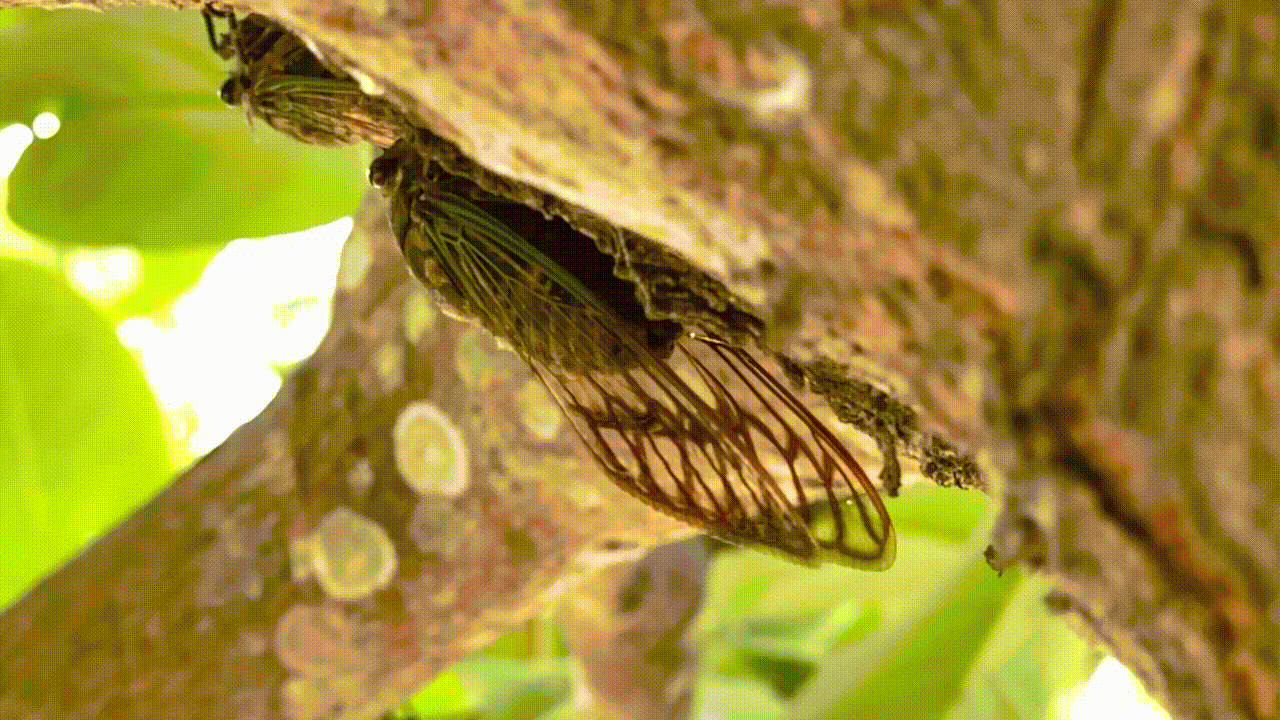Ecology
Dice Snakes Fake Their Own Deaths With Gory, Poop-Filled Theatrics
When attacked by a predator, the reptiles can play dead with convincing detail, employing blood and feces for the show
Has the Term 'Keystone Species' Lost Its Meaning?
More than 50 years after Bob Paine’s experiment with starfish, hundreds of species have been pronounced “keystones” in their ecosystems
An Ancient Maya Practice Could Be the Key to Growing Vegetables on Mars
Researchers are exploring whether intercropping—a technique of growing different types of plants in close proximity to one another—could be the secret to agriculture on the Red Planet
What Happens When Animals Cross the Road
Our byways are an unnatural incursion into the natural world, especially when they’re allowed to fall into disuse. Meet a roadkill scientist and a journalist tracking how roads mess with nature—and what we can do about it
Hibernating Bumblebee Queens Can Survive Underwater for Up to a Week, Study Finds
Researchers discovered the insects’ unexpected superpower during an accidental laboratory snafu
The English Farmers Who Harvest Rhubarb by Candlelight
The secret to the world’s sweetest rhubarb? Sealed sheds, total darkness and a little old-fashioned flair
Male Bonobos, Close Human Relatives Long Thought to Be Peaceful, Are Actually Quite Aggressive, Study Suggests
The new research found bonobos were three times more likely than chimpanzees to commit an act of physical aggression
Up to a Trillion Cicadas Could Emerge in the U.S. Later This Spring
Two specific broods will appear together for the first time since 1803
Florida Fish Are Mysteriously Dying After 'Spinning and Whirling,' and Scientists Can't Explain It
The abnormal behavior has raised special concerns about the endangered smalltooth sawfish, an odd-looking ray with chainsaw-like teeth, as 28 of them have died
Shells From Captain Cook's Final Voyage Were Rescued From a Dumpster
Long presumed lost, the collection of rare shells is now on display in England
Whales That Go Through Menopause Live Longer and May Help Care for Grandchildren
Alongside humans, five species of toothed whales are known to experience menopause. A new study suggests they evolved the trait to increase their lifespan
Don't Look Up: Cicadas Produce High-Speed Jets of Urine
The noisy, winged insects produce pee the same way that much larger animals do, according to a new study
'Strange' New Prehistoric Bird Discovered in China and Named for David Attenborough
The proto-bird lived some 120 million years ago and did not have teeth—a trait more similar to birds of today than to birds of its time—sharpening scientists' understanding of avian evolution
Why Do Poison Dart Frogs 'Tap Dance' With Their Toes? Research Sheds Light on Feeding Time Footwork
Scientists observed frogs tapping their toes up to 500 times per minute when prey was present, suggesting the behavior is related to predation
Single Orca Spotted Killing a Great White Shark for the First Time Ever
In less than two minutes, the marine mammal attacked a juvenile white shark and ripped out its liver in an encounter off the coast of South Africa last year
The World's Smallest Vertebrate Is a Tiny Brazilian Frog, Study Finds
Adult male Brazilian flea toads are just over 7 millimeters long on average, and females measure about 8.15 millimeters
Watch This Year's 'Dance Your PhD' Contest Winner, a Musical Celebration of Kangaroo Behavior
“Kangaroo Time” took home the competition’s overall prize, while interpretive dances on early life adversity, circadian rhythms and streambank erosion were also honored
Joro Spiders, Spreading in the Southeast, Can Survive Surprisingly Well in Cities
Unlike most spiders, the hustle and bustle of urban areas doesn’t seem to disturb the non-native Joros, a new study finds
Clownfish Can 'Count' Stripes on Other Fish to Identify Intruders, Study Suggests
Notoriously aggressive, common clownfish may be using basic mathematics to determine if another fish is a friend or foe
Hungry Sea Otters Help Prevent Erosion on California's Coast
The marine mammals, which were once hunted nearly to extinction, feed on crabs that would make the land more susceptible to erosion by digging holes in the soil and eating roots
Page 2 of 30
:focal(874x575:875x576)/https://tf-cmsv2-smithsonianmag-media.s3.amazonaws.com/filer_public/e9/05/e905e153-411a-4ea7-b9f1-94a18f954fac/rsbl20240058f001.jpg)
:focal(800x602:801x603)/https://tf-cmsv2-smithsonianmag-media.s3.amazonaws.com/filer_public/0d/83/0d83e9ef-a8a6-4e91-bd00-72b8764e7440/gettyimages-1176797379_web.jpg)
:focal(904x706:905x707)/https://tf-cmsv2-smithsonianmag-media.s3.amazonaws.com/filer_public/54/ec/54ec6205-f359-454f-be12-6cd6e3b0171e/journalpone0302149g004.png)
:focal(700x527:701x528)/https://tf-cmsv2-smithsonianmag-media.s3.amazonaws.com/filer_public/e3/3d/e33dd2fd-dd50-408c-ad69-4537fef45412/smithmag-podcast-s02-ep05-roads-article.jpg)
:focal(1194x921:1195x922)/https://tf-cmsv2-smithsonianmag-media.s3.amazonaws.com/filer_public/c2/f1/c2f1bfd0-7ad5-4a48-8265-45f8f45901a9/common_eastern_bumble_bee_in_central_park_25454.jpg)
:focal(2860x1907:2861x1908)/https://tf-cmsv2-smithsonianmag-media.s3.amazonaws.com/filer_public/05/37/0537d8a1-37ed-41b2-9b9d-964c59535230/gettyimages-1237797266.jpg)
:focal(1061x707:1062x708)/https://tf-cmsv2-smithsonianmag-media.s3.amazonaws.com/filer_public/b7/81/b781df5a-4717-4259-8050-c23a2e393a97/gettyimages-121989311.jpg)
:focal(2567x1711:2568x1712)/https://tf-cmsv2-smithsonianmag-media.s3.amazonaws.com/filer_public/06/d6/06d6edc9-cdfa-4bb9-8caf-afb524852213/gettyimages-1321221953.jpg)
:focal(400x267:401x268)/https://tf-cmsv2-smithsonianmag-media.s3.amazonaws.com/filer_public/af/41/af413d12-40fb-47c2-b475-1cd918646a74/sawfish-necropsy.png)
:focal(2518x1894:2519x1895)/https://tf-cmsv2-smithsonianmag-media.s3.amazonaws.com/filer_public/d5/e0/d5e04319-c816-41d5-bc03-06957fc7e58f/image532ja.jpeg)
:focal(1929x1258:1930x1259)/https://tf-cmsv2-smithsonianmag-media.s3.amazonaws.com/filer_public/fc/b2/fcb2f4a1-dccc-4314-b739-e5e5b993f77b/gettyimages-547332154.jpg)

:focal(391x361:392x362)/https://tf-cmsv2-smithsonianmag-media.s3.amazonaws.com/filer_public/57/01/5701e0ab-09fb-4524-80a3-67afd4b92318/1709658044-image-19.webp)
:focal(2144x1429:2145x1430)/https://tf-cmsv2-smithsonianmag-media.s3.amazonaws.com/filer_public/60/15/6015c016-7397-4805-82d3-1c60d933f17c/9467039017_3ac79d7c71_o.jpg)
:focal(2550x1700:2551x1701)/https://tf-cmsv2-smithsonianmag-media.s3.amazonaws.com/filer_public/2a/0b/2a0b6c69-c2df-417e-b474-dab29dcc8fcd/gettyimages-639204074.jpg)
:focal(992x727:993x728)/https://tf-cmsv2-smithsonianmag-media.s3.amazonaws.com/filer_public/02/76/0276be0a-1b81-4c5a-91c2-223f2275e0a3/zsc12654-fig-0001-m.jpg)
:focal(608x371:609x372)/https://tf-cmsv2-smithsonianmag-media.s3.amazonaws.com/filer_public/fe/ce/fece73a9-b759-4dfe-93cd-3397925041aa/danceyourphd.jpg)
:focal(770x710:771x711)/https://tf-cmsv2-smithsonianmag-media.s3.amazonaws.com/filer_public/d8/36/d83696d0-71f1-4236-8c5c-f88426893a48/joro3.jpg)
:focal(1100x754:1101x755)/https://tf-cmsv2-smithsonianmag-media.s3.amazonaws.com/filer_public/8d/ba/8dba8078-171f-439f-bc37-9606743adf83/amphiprion_ocellaris_clown_anemonefish_by_nick_hobgood_1.jpg)
:focal(726x429:727x430)/https://tf-cmsv2-smithsonianmag-media.s3.amazonaws.com/filer_public/ad/32/ad32752d-51c6-4814-b1c6-b2c382979a1d/gettyimages-563600441.jpg)